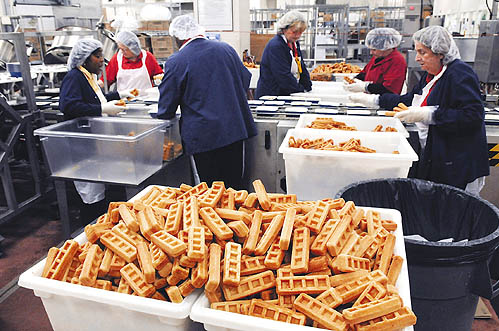 When is the last time you looked at the label for your favorite, comfort meal. We’ll wait…Your answer is probably similar to college students who, in a recent study administered by Ghent University in Belgium, have shown that nutritional labels hold minimal weight in their cafeteria meal decisions.
When is the last time you looked at the label for your favorite, comfort meal. We’ll wait…Your answer is probably similar to college students who, in a recent study administered by Ghent University in Belgium, have shown that nutritional labels hold minimal weight in their cafeteria meal decisions.
In a email to Reuters, the study’s authors Dr. Wim Verbeke and Christine Hoefkens conclude:
Although it is important to inform consumers about the nutritional characteristics of the food offered, providing nutrition information in less healthy food environments such as fast-food restaurants is unlikely to alter consumers’ food choices.
This news strikes a small blow to consumer advocates who feel it’s absolutely necessary to fight daily in order to place nutritional labels on the food industry’s items. They demand that labels must have large enough font and be placed in strategically significant areas on packaging to keep consumers informed. Unfortunately, the study clearly shows that additional factors may play a larger role in eating healthier.
The experiment started with researchers asking students to log their daily food intake. After a several days, researchers put up posters in the dining area that rated food choices with stars–zero stars the least healthiest to three stars for the most nutritious. Participants were oblivious to the poster’s star-rating system and actual intent. Additionally, nutrition labels were situated directly next to most food choices in the cafeteria.
Even after six months, the mostly female co-ed participants logged in their food choices, and the results were provocative: there was no change in eating patterns, regardless of the information provided by the labels.
Researchers conclude that a particular food’s price and taste are larger elements than nutritional density. With the recent push by the US Government to label everything from cigarettes to food, this study reveals that the system is broke, leaving many Americans with the poor choices between nutritionally defunct food that either taste pleasing or is cheap.
Maybe if the government cut certain subsidies to corn, soy, and factory meat and increased subsidies to vegetables, fruit, and local farms we’ll see an overall healthier proliferation in American’s food choices.






